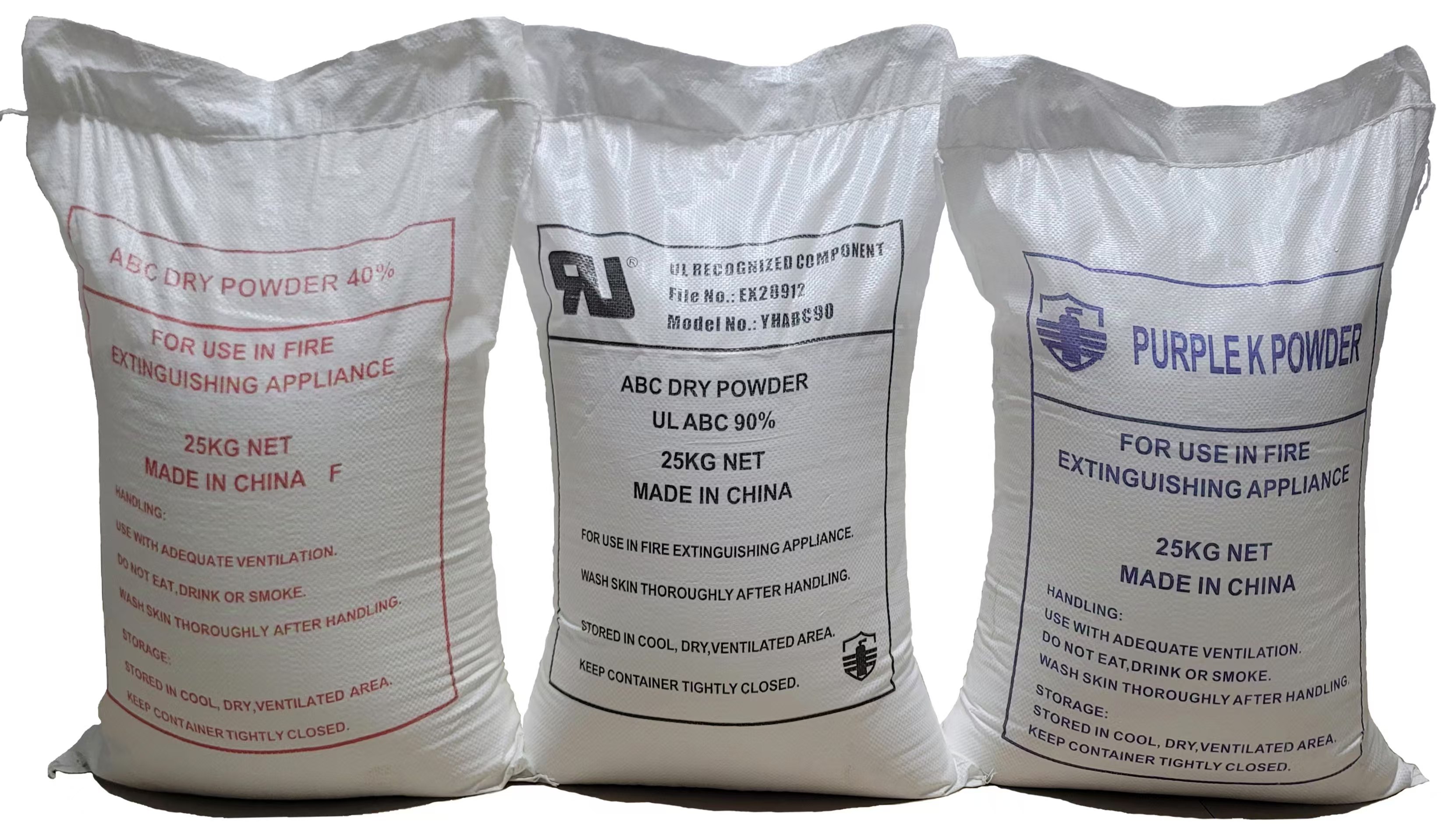When choosing a fire extinguisher, it's essential to understand the specific properties of each dry chemical powder type to ensure effective fire suppression for your needs. Two popular options—Purple-K and ABC powder—serve different purposes and perform best in specific scenarios. Let’s compare their properties, advantages, and typical uses to help you decide which is the best fit for your fire safety needs.

---
1. Composition and Primary Use
- Purple-K: This powder is primarily composed of potassium bicarbonate, known for its high efficacy on Class B (flammable liquids) and Class C fires. It's often used in high-risk areas where volatile flammable liquids are present, such as industrial sites, chemical plants, and airport fire rescue.
- ABC Powder: Made of monoammonium phosphate, ABC powder is a versatile agent that works on Class A (ordinary combustibles), Class B, and Class C fires. Its wide range makes it suitable for general-purpose use in homes, offices, schools, and commercial spaces.
2. Fire-Fighting Effectiveness
- Purple-K: This powder is known for its superior effectiveness on liquid and gas fires, outperforming many other agents due to its chemical makeup. It quickly smothers flames and creates a barrier to prevent re-ignition, which is why it’s often selected for areas with flammable liquids and gas.
- ABC Powder: ABC powder is highly effective across multiple fire types, making it a go-to for general fire safety. While it works well on liquid and electrical fires, it may be slightly less effective on flammable liquids than Purple-K.
3. Residue and Cleanup
- Purple-K: The powder can be corrosive if left on surfaces, so quick cleanup is necessary, especially in areas with sensitive equipment. However, it creates less residue than ABC powder, which can be a consideration if post-fire cleanup is a concern.
- ABC Powder: ABC powder tends to leave a significant amount of residue, which can be damaging to electronics and surfaces if not cleaned promptly. For general settings, this isn’t typically an issue, but for environments with delicate equipment, it’s worth considering.
4. Recommended Applications
- Purple-K: Ideal for high-hazard environments—chemical plants, oil refineries, and transportation hubs—where rapid suppression of liquid fires is crucial. It’s often used by emergency responders due to its quick extinguishing power on gas and liquid fires.
- ABC Powder: Best suited for versatile use in homes, offices, and public buildings where multiple fire types are possible. Its ability to handle ordinary combustibles (like wood and paper) makes it a popular choice for residential and commercial buildings.
5. Pros and Cons Summary
- Purple-K Pros:
- Superior effectiveness on liquid fires
- Quick suppression for high-risk areas
- Minimal residue compared to ABC powder
- Purple-K Cons:
- Limited use on Class A fires (ordinary combustibles)
- More expensive than ABC powder in many cases
- ABC Powder Pros:
- Multi-class capability (A, B, and C fires)
- Affordable and widely available
- Excellent for general-purpose use
- ABC Powder Cons:
- Residue can be more challenging to clean
- Less effective than Purple-K on pure liquid fires
---
Which Should You Choose?
- If your environment is high-risk, with the likelihood of flammable liquid fires (like a fuel storage facility, lab, or chemical plant), Purple-K may be the better option due to its powerful suppression of Class B and C fires.
- If you need a general-purpose fire extinguisher suitable for a range of fire types (such as for a home, school, or office), ABC powder offers greater versatility.
Each option has unique benefits and considerations, so choosing between Purple-K and ABC powder depends on your specific fire safety needs and environment.

